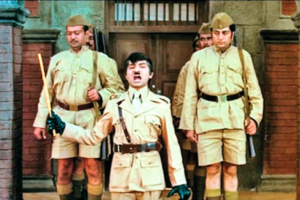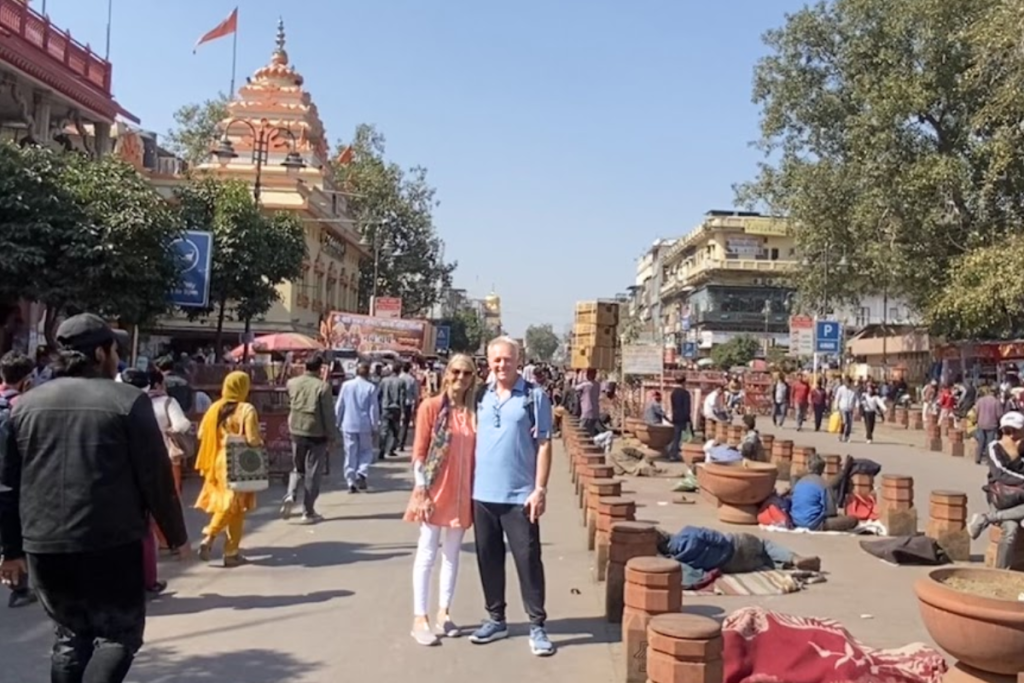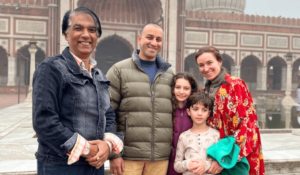Qudsia Bagh at Old Delhi is a city steeped in history, Shahjahanabad city where every corner holds tales of wars, romance, and cultural richness.Unveil a mesmerizing a hidden gem on your Old Delhi Heritage Walk-Qudsia Bagh, a charming 18th-century garden built by Empress Qudsia Begum. Qudsia Bagh or Qudsia Garden, a forgotten gem in the Old Delhi heritage walk that whispers of its grandeur from ages past.

Qudsia Bagh: Old Delhi Heritage Walk
Qudsia Bagh stands as a captivating stop on the Old Delhi Heritage Walk, inviting visitors to delve into its rich history and architectural splendor. As an 18th-century garden complex and palace nestled in Old Delhi, Qudsia Bagh exudes an aura of royal elegance and cultural significance. Exploring this historic site offers a glimpse into the bygone era of Mughal opulence and the intriguing tales of Empress Qudsia Begum. With its serene ambiance and fascinating heritage, Qudsia Bagh is indeed a must-visit destination for anyone embarking on the Old Delhi Heritage Walk.
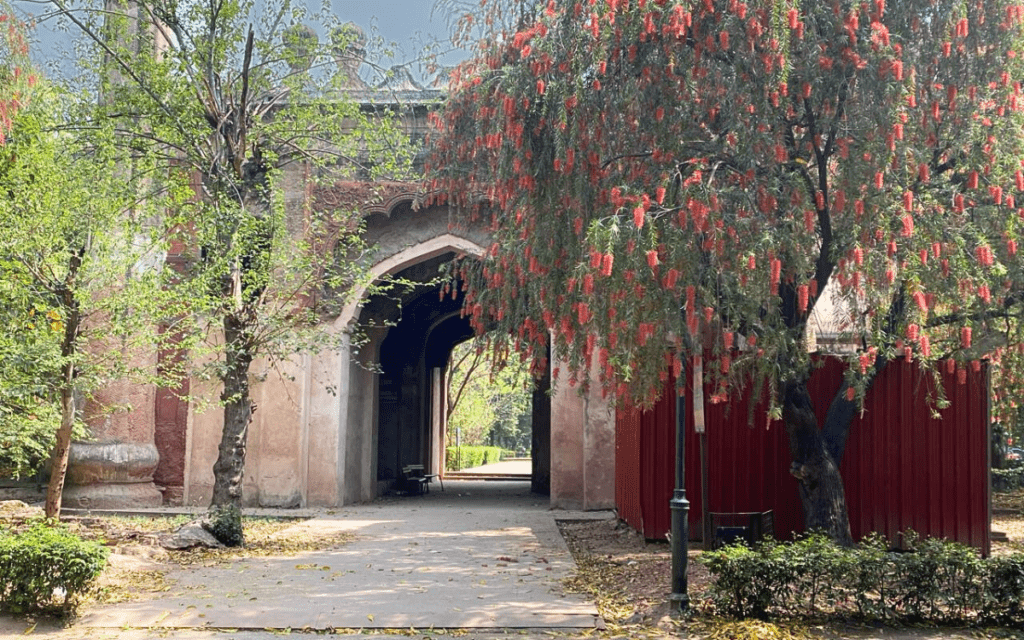
Qudsia Bagh: Overview
Constructed by Begum Qudsia, the wife of Muhammad Shah, this complex was once a lavish palace adorned with luxuries beyond imagination. It boasted cascading waterfalls, meticulously manicured gardens, opulent chambers, and even a private mosque. Today, only a grand gateway stands as a testament to its former glory, leading the way to the Qudsia mosque.
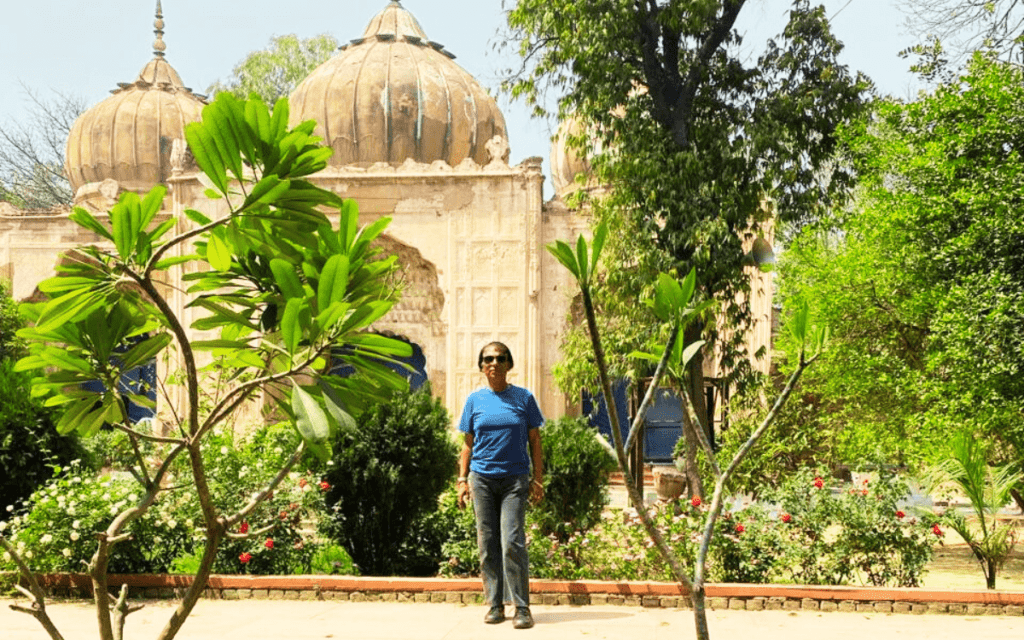
The garden itself was designed in the Persian Charbagh style, featuring four symmetrical gardens with flowing water canals. The surviving Baradari, with its blend of Persian and British architectural influences, stands proud with its twelve doors, offering a glimpse into a bygone era. While the mosque once served as a private sanctuary for royalty, it now welcomes the local community, adding another layer of significance to this historical site on the Old Delhi heritage walk. Venture into Qudsia Bagh, part of the Old Delhi heritage walk, and step back in time to experience the splendor and serenity of this once magnificent palace garden.
Qudsia Bagh: History

Qudsia Bagh, also known as Qudsia Garden, stands as a testament to the rich history of Old Delhi and is a highlight of the Old Delhi Heritage Walk. This 18th-century garden complex and palace have roots tracing back to the fascinating tale of Udham Bai, a Hindu woman who rose to prominence as Empress Qudsia Begum. Udham Bai, originally a public dancing girl, captured the attention of Emperor Muhammad Shah through the efforts of Khadija Khanum. Impressed by her charm and generosity, the emperor bestowed upon her various titles, including Bai-Ju Sahiba, Nawab Qudsia, and Sahiba-uz-Zamani.
Qudsia Begum’s legacy extended beyond her titles, as she commissioned numerous public and private projects in Delhi, showcasing her dedication to the city’s development. One notable example is the Sunehri Masjid near the Red Fort, a stunning mosque constructed between 1747 and 1751.
Qudsia Bagh: Echoes of Struggle
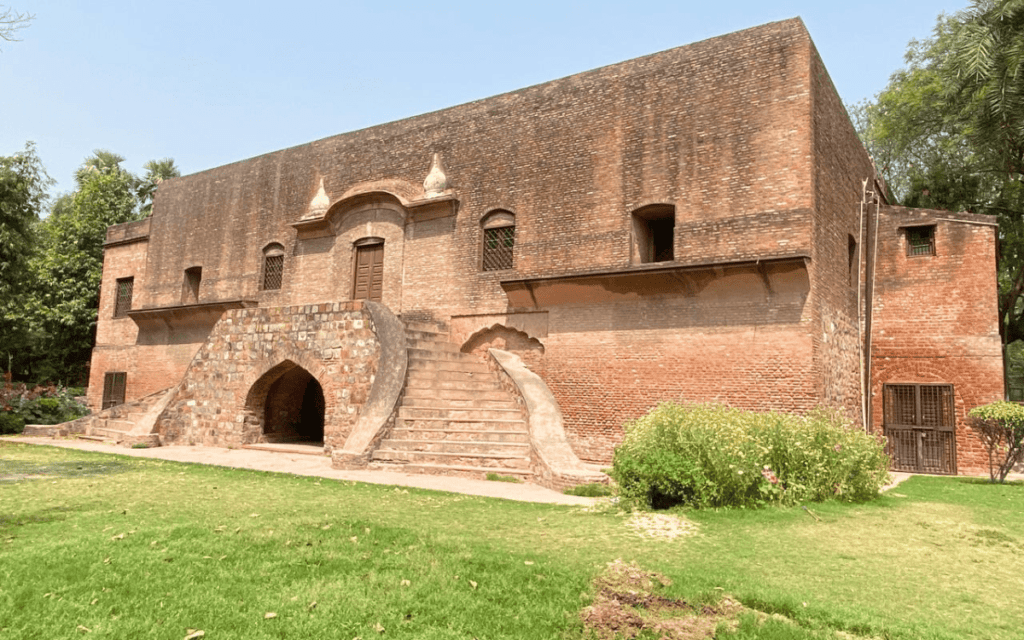
During the 1857 First War of Independence, Qudsia Bagh, a part of the Old Delhi heritage walk and a cherished site in the Qudsia garden, bore witness to destruction and devastation. The garden, along with its historic structures, was severely damaged as it became a battleground for revolutionaries against British troops. The mosque within the garden complex served as a strategic location for firing upon the troops, leaving the structures in ruins that still reflect the intense fighting and the sacrifices made during that tumultuous period.

Qudsia Bagh: Nearest Metro
Civil Lines Metro Station on Yellow line 9 minutes is the best for walkable path, Kashmere Gate Metro 7 Minutes Walk.
Near By Place to Visit: Pir Ghaib & Baoli Old Delhi Heritage Walk
Qudsia Bagh Where history whispers tales of struggle and resilience, echoing the echoes of the 1857 First War of Independence.
Delhi Tour Guide-Harry

